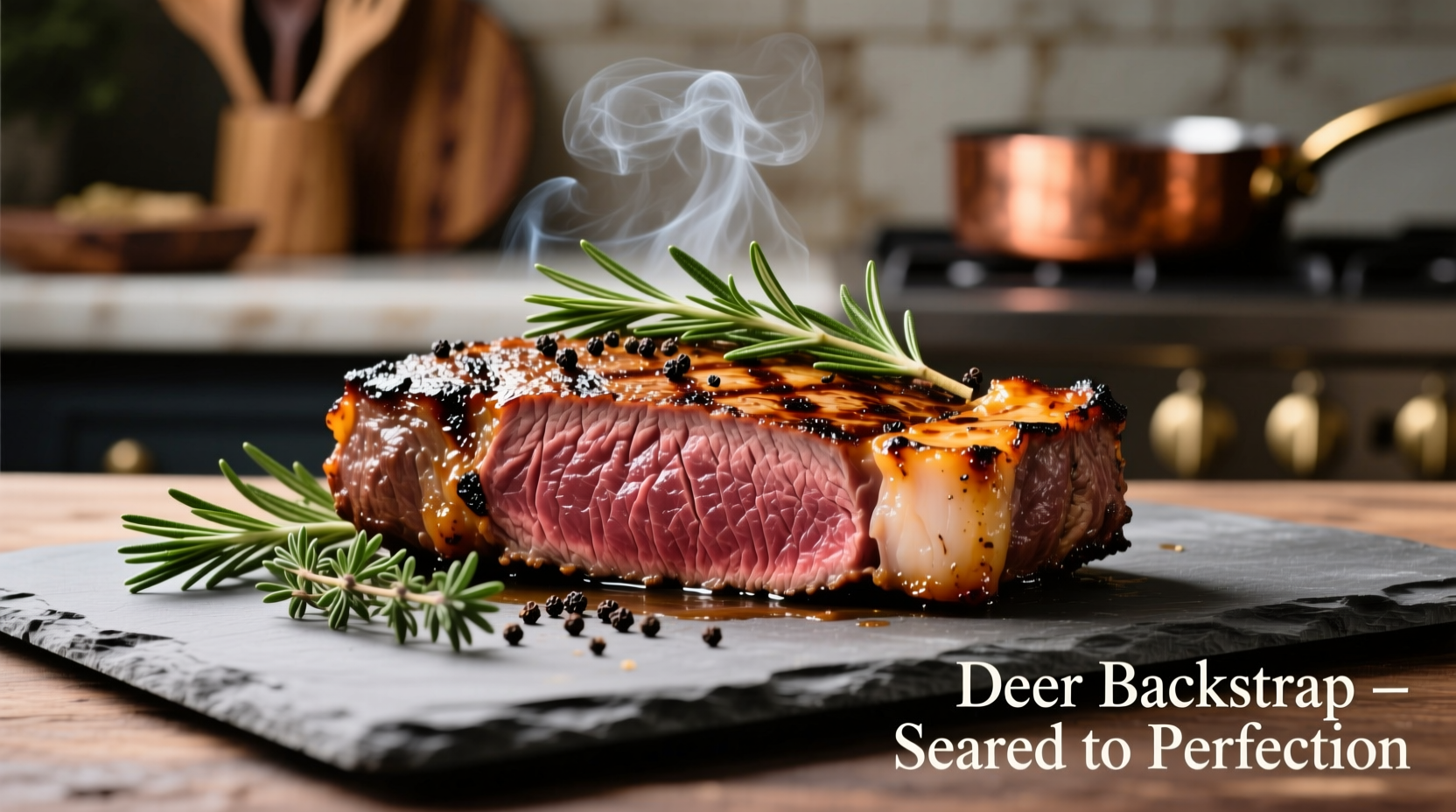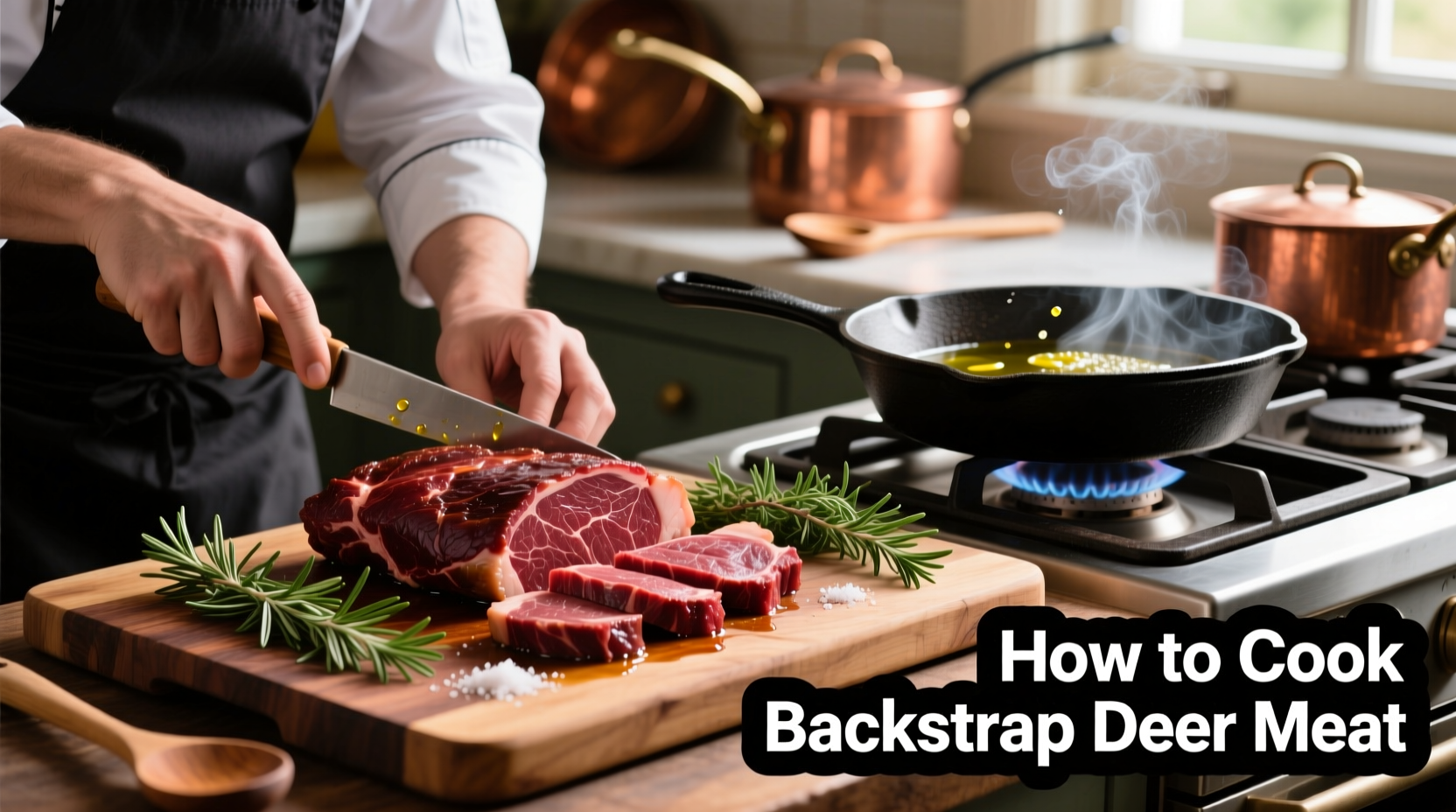Perfectly cooked deer backstrap reaches 130-135°F internal temperature, rests for 5-10 minutes, and is sliced against the grain. This lean cut requires precise cooking to maintain tenderness—overcooking by just 5°F makes it tough. Marinate for 2-12 hours with acidic ingredients like vinegar or citrus to reduce gamey flavor while preserving natural richness.
Deer backstrap—the tenderloin running alongside the spine—is the most prized cut of venison. Unlike beef, this ultra-lean meat lacks marbling, making proper preparation essential for restaurant-quality results at home. As a professional chef with extensive wild game experience, I've refined techniques that transform this delicate cut into a memorable meal while honoring its unique characteristics.
Why Deer Backstrap Demands Special Attention
Understanding this cut's biology prevents common cooking mistakes. Deer backstrap contains minimal fat (typically 2-3% fat content versus 15-20% in beef tenderloin), according to USDA Food Safety and Inspection Service data. This leanness means:
- No margin for error in temperature control
- Zero tolerance for overcooking
- Critical need for proper resting time
Wisconsin Department of Natural Resources research confirms that venison's low fat content causes rapid moisture loss above 140°F, resulting in dry, tough meat. This explains why traditional beef cooking methods often fail with deer.
Essential Preparation Steps
Trimming and Handling
Remove the thin silverskin membrane using a sharp boning knife. Hold the knife at a 30-degree angle and slide under the membrane while pulling it taut with your other hand. This connective tissue won't tenderize during cooking and creates unpleasant chewiness.
Marinating Science
Acidic marinades (containing vinegar, wine, or citrus) break down muscle fibers without compromising texture. Penn State Extension research shows optimal results with:
- 2-4 hours for citrus-based marinades
- 6-12 hours for wine or vinegar-based marinades
- Never exceeding 24 hours (causes mushy texture)
Effective marinade ratio: 1 part acid to 3 parts oil with herbs and spices. Avoid dairy-based marinades—they don't penetrate venison effectively due to its dense muscle structure.
| Cooking Method | Best For | Internal Temp | Rest Time |
|---|---|---|---|
| Pan-searing | 1-2 servings, precise control | 130-135°F | 5-7 minutes |
| Grilling | Smoky flavor preference | 125-130°F | 8-10 minutes |
| Sous vide | Perfect edge-to-edge doneness | 130°F | 3-5 minutes |
Step-by-Step Pan-Searing Method (Recommended)
- Remove backstrap from refrigerator 30 minutes before cooking
- Pat completely dry with paper towels
- Season generously with coarse salt (1 tsp per pound)
- Heat cast-iron skillet over medium-high until water droplets sizzle
- Add high-smoke point oil (avocado or grapeseed)
- Sear undisturbed for 2-3 minutes per side until golden crust forms
- Add butter, garlic, and herbs during last minute of cooking
- Remove at 125°F for medium-rare (will rise to 135°F during rest)
- Rest covered loosely with foil for 5-7 minutes
- Slice against the grain at 45-degree angle into ½-inch pieces

Temperature Control: The Critical Factor
Invest in an instant-read thermometer—guessing doneness ruins this expensive cut. USDA guidelines for venison recommend 145°F for safety, but culinary experts agree that 130-135°F delivers optimal texture while remaining safe when properly handled. The key is understanding that:
- 120-125°F = Rare (bright red center)
- 130-135°F = Medium-rare (ideal for tenderness)
- 140°F+ = Begins rapid moisture loss
Remember that carryover cooking adds 5-10°F during resting. Remove from heat at 5°F below your target temperature.
Flavor Pairing Strategies
Deer's rich flavor pairs beautifully with:
- Acidic elements: Black cherry reduction, red wine sauce, or balsamic glaze
- Earthy components: Morel mushrooms, roasted root vegetables
- Herb combinations: Rosemary-thyme blend or juniper-rosemary rub
- Spice balance: Mustard seeds with cracked black pepper
Avoid overpowering the meat's natural flavor. As with other game meats, let the venison shine while enhancing its inherent qualities.
Common Mistakes to Avoid
Even experienced cooks make these critical errors:
- Skipping the dry step: Moisture prevents proper searing
- Overcrowding the pan: Causes steaming instead of searing
- Cutting too soon: Releases precious juices before reabsorption
- Using strong spices: Cloves or excessive cumin mask natural flavor
Storage and Reheating Guidelines
Proper handling maintains quality:
- Refrigerate leftovers within 2 hours
- Store in airtight container with cooking juices
- Reheat gently in 250°F oven until 110°F internal temp
- Never microwave—causes uneven texture and dryness
- Freeze uncooked backstrap vacuum-sealed for up to 12 months











 浙公网安备
33010002000092号
浙公网安备
33010002000092号 浙B2-20120091-4
浙B2-20120091-4